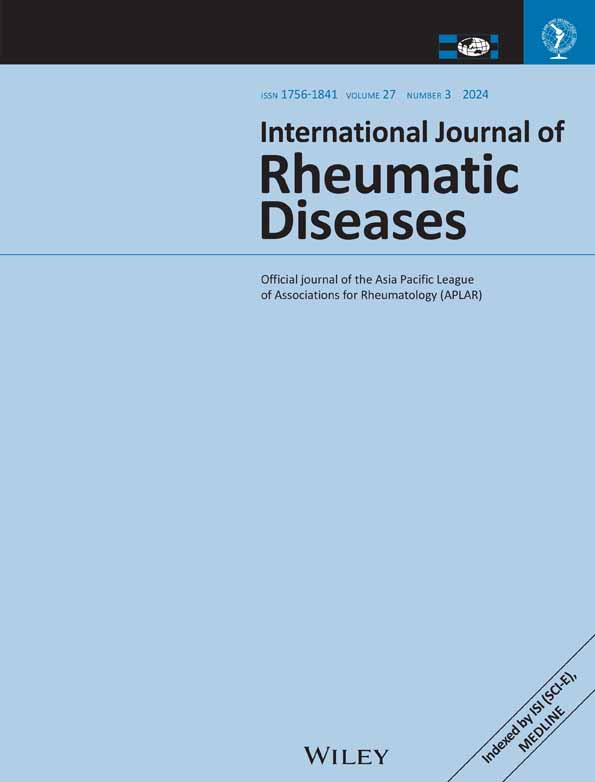Comparison of characteristics of muscle magnetic resonance imaging findings in patients with antineutrophilic cytoplasmic antibody-associated vasculitis and polyarteritis nodosa
Abstract
Aim
This study aimed to analyze the muscle magnetic resonance imaging (MRI) findings of patients with antineutrophilic cytoplasmic antibody-associated vasculitis (AAV) and polyarteritis nodosa (PAN) presenting with clinical symptoms in the extremities.
Methods
Retrospective analysis was conducted on short tau inversion recovery MRI findings, with a focus on intramuscular vessels displaying abnormal perivascular signals, in 22 and eight patients with AAV and PAN, respectively. The number per unit area (4 cm2) and diameter of abnormal vessels on muscle MRI were compared between patients with AAV and those with PAN. Cut-off values, clinical sensitivity, and specificity for these indices were calculated from the receiver operating characteristic curves to distinguish between AAV and PAN, and the relationship between the indices and clinical findings in AAV was analyzed.
Results
The number of abnormal vessels per unit area was significantly higher in AAV compared to PAN (p < .05). Additionally, the diameter of the abnormal vessels was significantly higher in PAN than in AAV (p < .05). The presence of >6.44 abnormal vessels per unit area or ≤3.61 mm diameter of abnormal vessels was able to predict AAV (sensitivity, 0.955; specificity, 0.625). AAV patients with peripheral neuropathy exhibited a significantly higher number of abnormal vessels per unit area than those without peripheral neuropathy (p < .05).
Conclusions
Muscle MRI can detect small- to medium-vessel vasculitis and be a valuable tool for distinguishing between patients with AAV and PAN experiencing clinical symptoms in the extremities.
CONFLICT OF INTEREST STATEMENT
None.
Open Research
DATA AVAILABILITY STATEMENT
All the clinical data included in this study are available from the corresponding author upon reasonable request. Patient-level data will be anonymized, and study documents will be redacted to protect the privacy of the trial participants.




